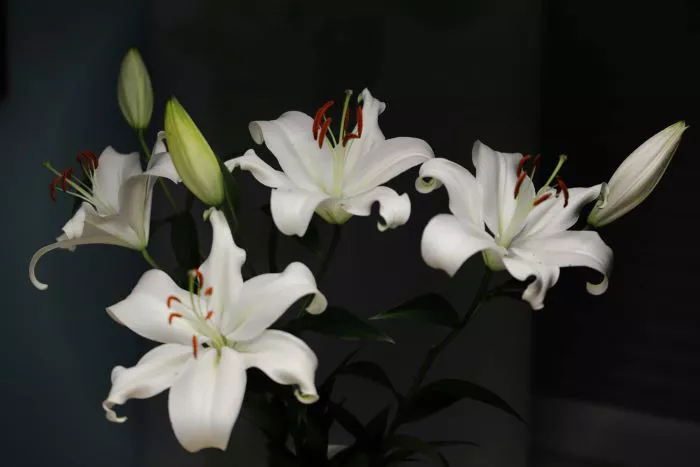Flowers are not just beautiful additions to gardens and landscapes; many of them are also edible and can enhance our culinary experiences. Edible flowers have been used in cooking for centuries, adding flavor, color, and texture to dishes. This article will explore various edible flowers, their uses in cooking, and important considerations for safe consumption.
Understanding Edible Flowers
Edible flowers come from a variety of plants and can be used in salads, desserts, teas, and garnishes. They can offer unique flavors, ranging from sweet to savory, and can provide vibrant colors to enhance the visual appeal of dishes. While many flowers are safe to eat, it is crucial to ensure that they are free from pesticides and other chemicals. Always verify that a flower is indeed edible before consumption.
Common Edible Flowers
Several flowers are well-known for their culinary uses. Here are some of the most popular edible flowers and their characteristics.
Nasturtiums
Nasturtiums are vibrant flowers that come in shades of orange, yellow, and red. They have a peppery flavor similar to arugula. Both the leaves and flowers are edible, making them a great addition to salads and sandwiches. Nasturtiums can also be used as a garnish for soups and appetizers.
Calendula
Calendula, also known as pot marigold, features bright yellow and orange flowers. The petals have a slightly spicy, tangy flavor and can be used fresh in salads or as a garnish. Calendula petals can also be dried and used as a natural food coloring or in herbal teas.
Chive Blossoms
Chive blossoms are purple, spherical flowers that grow on chive plants. They have a mild onion flavor and can be used in salads, dressings, and as a garnish for various dishes. Chive blossoms can also be infused into vinegar for a flavorful addition to dressings.
Hibiscus
Hibiscus flowers are known for their striking appearance and tart flavor. They are often used in teas, jams, and jellies. Dried hibiscus petals can be steeped in hot water to make a refreshing herbal tea with a vibrant red color. Hibiscus can also be used in cocktails and desserts.
Lavender
Lavender is famous for its fragrant aroma and delicate purple flowers. The flowers have a sweet, floral flavor and can be used in baked goods, such as cookies and cakes. Lavender can also be infused into syrups, teas, and even savory dishes, providing a unique flavor profile.
Rose Petals
Rose petals are not only beautiful but also edible. They have a sweet, fragrant flavor that can enhance various dishes. Fresh rose petals can be used in salads, desserts, and as garnishes. Dried rose petals can be used to make tea or as a flavoring in syrups and jams.
Squash Blossoms
Squash blossoms are the flowers of squash plants, including zucchini and pumpkin. They have a mild, slightly sweet flavor and can be stuffed, battered, and fried or used in soups and salads. Squash blossoms are a seasonal delicacy and are best enjoyed fresh.
Borage
Borage flowers are bright blue and have a slightly cucumber-like flavor. They can be used in salads, cocktails, and as garnishes. Borage is also known for its medicinal properties and is sometimes used in herbal remedies.
Dandelion
Dandelion flowers are often considered weeds, but they are entirely edible. The flowers have a sweet, honey-like flavor and can be used in salads, wines, and syrups. Dandelion greens are also edible and can be used in salads or cooked dishes.
Important Considerations
While many flowers are safe to eat, there are important considerations to keep in mind when foraging or purchasing edible flowers.
Ensure Edibility
Always verify that a flower is edible before consuming it. Some flowers can be toxic or cause allergic reactions. It is advisable to consult a reliable source or expert before trying new flowers.
Avoid Chemicals
When consuming edible flowers, it is essential to ensure they have not been treated with pesticides or other chemicals. If you are foraging, do so in areas that are free from pollution and chemical treatments. If purchasing, buy from reputable sources or organic growers.
Use in Moderation
Even edible flowers can cause digestive upset in some individuals if consumed in large quantities. It is best to start with small amounts and observe how your body reacts.
Culinary Uses of Edible Flowers
Edible flowers can be used in various culinary applications. Here are some ideas for incorporating them into your cooking.
Salads
Fresh edible flowers can add color and flavor to salads. Combine different varieties for a visually appealing dish. Flowers like nasturtiums, calendula, and chive blossoms work well in salads.
Beverages
Edible flowers can be used to enhance beverages. Hibiscus flowers can be steeped to make tea, while lavender can be infused into syrups for cocktails or lemonades. Rose petals can be added to sparkling water for a fragrant touch.
Desserts
Flowers can add a unique flavor to desserts. Lavender can be used in cookies and cakes, while rose petals can be used to decorate cakes or infused into syrups for drizzling over desserts. Dandelion flowers can be used to make sweet syrups.
Garnishes
Edible flowers make beautiful garnishes for various dishes. Use them to decorate soups, appetizers, or main courses. Their vibrant colors can elevate the presentation of any meal.
Conclusion
Edible flowers are a delightful and versatile addition to the culinary world. From the peppery nasturtium to the fragrant lavender, these flowers can enhance flavors and add visual appeal to dishes. While many flowers are safe to eat, it is essential to verify their edibility and avoid chemicals. By incorporating edible flowers into your cooking, you can enjoy their unique flavors and beauty while exploring new culinary possibilities. Whether in salads, beverages, or desserts, edible flowers offer a wonderful way to celebrate the beauty of nature on your plate.


